Industrial Meat Slicer Machines For Food Processing Businesses
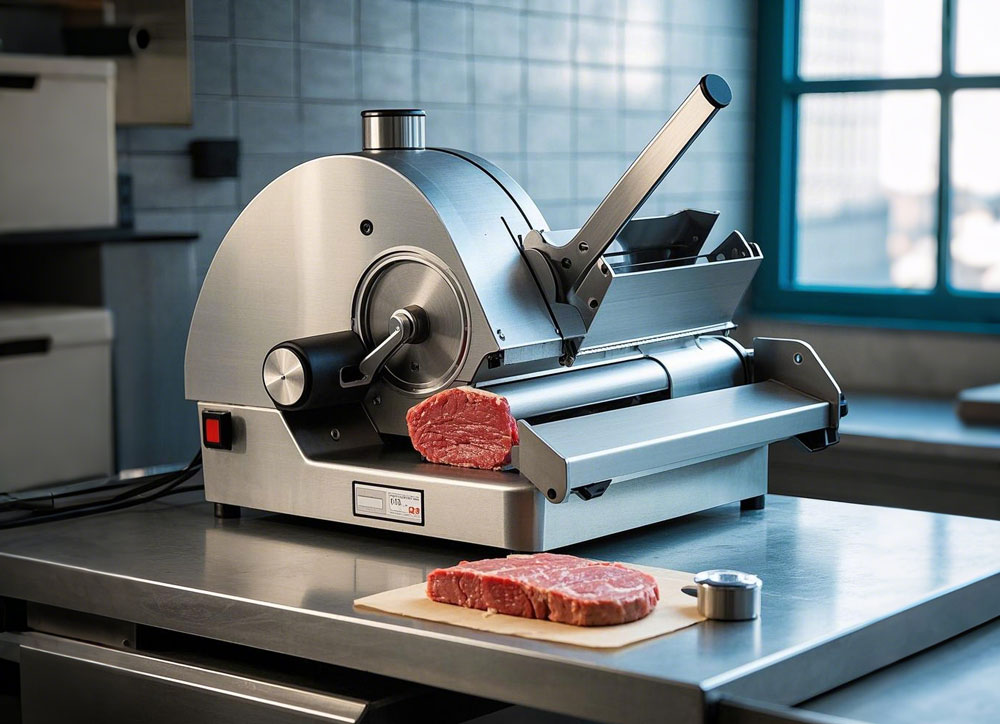
Introduction: Why Industrial Meat Slicer Machines Are Essential for Food Processing
Industrial meat slicer machines play a critical role in the food processing industry, providing the precision and efficiency required to meet the demands of high-volume production. These machines are more than just tools; they are essential assets that drive consistency, speed, and quality. As businesses grow and the need for uniformity and volume increases, investing in a robust, high-performing meat slicer becomes indispensable for maintaining competitive advantage.
Understanding the Role of Meat Slicers in the Food Industry
Meat slicers are central to food processing operations, helping transform raw meat into uniform, market-ready products. Whether it’s in large-scale processing plants, butcher shops, or deli counters, slicers ensure efficiency, precision, and hygiene, allowing businesses to meet tight deadlines and produce high-quality products.
The Growing Demand for Efficient Meat Processing Solutions
As consumer demand for high-quality, pre-sliced meats increases, businesses must adopt solutions that allow them to process large volumes quickly while maintaining consistency. The right meat slicer machine helps meet these expectations, ensuring that businesses stay competitive in a fast-paced industry.
How Industrial Meat Slicers Enhance Operational Efficiency
With industrial slicers, businesses can significantly reduce processing time while enhancing output. These machines are engineered to handle large quantities of meat at high speeds, optimizing labor costs and boosting overall production efficiency.
Related Products:Meat Slicer Machine
The Anatomy of an Industrial Meat Slicer Machine
Key Components: Blades, Motors, and Feed Mechanisms
Industrial meat slicers are composed of several crucial components: the blade, motor, and feed mechanism. Each part is designed to handle heavy-duty tasks, from cutting thick chunks of meat to slicing delicate portions, ensuring optimal performance over extended periods.
Types of Meat Slicer Blades: What to Know
Blades come in various designs, such as serrated, smooth, or dual-edged. The blade’s material and design directly impact the slicing process, determining the machine's ability to handle different types of meat—whether frozen, fresh, or processed—while maintaining precision.
How Industrial Slicers Differ from Commercial and Home Models
Industrial slicers are engineered for continuous, high-volume use, unlike commercial or home slicers that may struggle with extended operations. With stronger motors, larger blades, and more durable materials, industrial slicers are built to withstand demanding environments.
Benefits of Using Industrial Meat Slicer Machines in Food Processing
Speed and Efficiency: Meeting High-Volume Demands
One of the primary benefits of industrial slicers is their ability to slice large volumes of meat quickly. These machines are designed to operate seamlessly, cutting through various meat types at high speeds without sacrificing quality or precision.
Consistent and Precise Cuts: Ensuring Quality Standards
The precision of industrial slicers ensures that each slice is uniform in thickness and presentation, critical for maintaining quality control in meat products. This consistency is vital for businesses that want to maintain their reputation and meet customer expectations.
Reducing Labor Costs and Improving Productivity
By automating the slicing process, businesses can reduce their reliance on manual labor, lowering operational costs. Industrial slicers streamline the workflow, allowing employees to focus on other tasks while the slicer handles the bulk of the work efficiently.
Enhancing Product Shelf Life with Proper Slicing Techniques
Slicing meat correctly impacts its shelf life. With even, precise cuts, industrial slicers help minimize the exposure of meat to the elements, preventing spoilage and extending freshness.
How Industrial Meat Slicer Machines Work
The Mechanics Behind High-Performance Slicing
Industrial slicers are designed with powerful motors and sharp blades that work together to slice meat quickly and efficiently. The motor’s power determines how fast the slicer can cut through tough meat, while the blade’s sharpness ensures clean cuts.
Automated vs. Manual Feed Systems: Which Is Best for Your Business?
Automated feed systems allow for a continuous, hands-free slicing process, ideal for businesses that handle large quantities of meat. Manual feed slicers, on the other hand, offer greater flexibility and control for smaller, more specialized tasks, though they require more operator involvement.
Blade Movement and Adjustments: The Key to Precision Cuts
Blade movement is central to achieving precision. Industrial slicers often feature adjustable mechanisms that allow operators to control the blade's speed and angle, ensuring that each slice is made with the highest level of accuracy.
Different Types of Industrial Meat Slicers
Vertical Meat Slicers: Ideal for Large Cuts and Roasts
Vertical slicers are designed to handle larger cuts of meat, such as roasts and hams. The vertical cutting action allows for maximum capacity and efficiency when dealing with bulkier pieces of meat.
Horizontal Meat Slicers: Perfect for Thin, Uniform Slices
Horizontal slicers excel at producing thin, uniform slices, making them ideal for deli meats or products that require precision and consistency. These machines provide greater control over thickness and texture.
Gravity Feed Meat Slicers: Simple, High-Volume Efficiency
Gravity feed slicers are known for their simplicity and efficiency. These slicers use gravity to feed the meat into the blade, making them ideal for high-volume operations where minimal operator input is needed.
Automatic Meat Slicers: Streamlining Operations with Minimal Labor
Automatic slicers reduce manual intervention by automatically feeding and slicing the meat. These machines are ideal for businesses with high throughput, reducing the workload for operators and improving efficiency.
Manual Feed Meat Slicers: Versatility in Small-Scale Operations
Manual feed slicers offer flexibility and control, making them ideal for smaller operations or businesses with more specialized needs. While they require more involvement from the operator, they can be fine-tuned to deliver precise cuts.
Features to Consider When Choosing an Industrial Meat Slicer
Blade Size and Quality: Key to Achieving Precision Cuts
The size and quality of the blade directly affect the slicing ability of the machine. Larger blades allow for thicker cuts, while high-quality steel ensures a sharper, longer-lasting edge that improves performance.
Adjustable Thickness Control for Versatility
Slicers with adjustable thickness controls offer greater versatility, allowing operators to change the slice thickness based on production needs. This feature is essential for businesses that process a variety of meat types.
Heavy-Duty Motors: Ensuring Consistent Performance
A high-power motor is essential for consistent slicing performance, especially when processing tough cuts of meat. The motor should be designed to handle continuous operation without overheating.
Easy-to-Clean Design for Hygiene and Maintenance
Hygiene is critical in food processing. Look for slicers with easy-to-remove parts and smooth surfaces to ensure proper cleaning and maintenance, reducing the risk of contamination.
Safety Features: Protecting Operators from Injury
Safety is a top priority when selecting an industrial meat slicer. Look for machines with safety guards, emergency shut-offs, and protective covers that minimize the risk of accidents.
Energy Efficiency: Reducing Operational Costs
Energy-efficient models help businesses save on electricity bills while ensuring optimal slicing performance. Look for machines with energy-saving features, such as low-power motors and automatic shut-off mechanisms.
Durability and Build Quality: Stainless Steel Construction
Industrial slicers should be built to last, with high-quality, corrosion-resistant materials like stainless steel. This not only ensures durability but also aids in maintaining hygiene.
Choosing the Right Industrial Meat Slicer for Your Business
Assessing Your Business Needs: How Much Meat Do You Process?
Before purchasing, assess how much meat your business processes daily. This will determine the size, capacity, and features required in your slicer.
Available Space in Your Facility: Finding the Right Fit
Consider the available space in your facility to ensure the slicer fits comfortably within your production line without obstructing workflow or safety.
Matching Slicer Features to Production Requirements
Choose a slicer that meets the specific needs of your production line. Whether you need to slice large roasts or thin deli meats, matching the slicer’s features to your requirements ensures efficiency.
Budget Considerations: Investing for the Long-Term
While high-quality slicers may have a higher initial cost, their durability and efficiency provide long-term savings. Consider both the initial investment and long-term costs, including maintenance and energy consumption.
Maintenance and Care for Industrial Meat Slicer Machines
Regular Cleaning and Sanitizing: Ensuring Hygiene
Routine cleaning is essential to maintaining hygiene and ensuring the slicer functions properly. Use appropriate cleaning agents to sanitize blades, trays, and feed systems.
Blade Sharpening: Keeping Cuts Crisp and Clean
Blade sharpening is vital for maintaining the precision of your slicer. A dull blade can compromise the quality of the cuts and damage the machine.
Lubricating Moving Parts: Ensuring Longevity
Proper lubrication of moving parts ensures that the slicer operates smoothly, reducing wear and tear and extending its lifespan.
Troubleshooting Common Issues: Maintaining Peak Performance
Learn to identify and fix common issues such as jamming, uneven cuts, or motor malfunctions to keep your slicer performing at its best.
Professional Servicing vs. DIY Care: When to Call the Experts
While basic maintenance can be handled in-house, more complex issues may require professional servicing. Regular servicing ensures that your slicer runs efficiently and lasts longer.
How Industrial Meat Slicers Improve Food Product Quality
Achieving Even Slices for Consistency in Presentation
Industrial slicers ensure that each slice is identical, contributing to the overall quality and appearance of the product, which is essential for customer satisfaction.
The Impact of Slicing on Texture and Flavor
The texture and flavor of meat can be significantly influenced by how it is sliced. Even, uniform slices help preserve the texture, enhancing flavor and tenderness.
Minimizing Waste and Maximizing Yield with Precision Slicing
Precision slicing minimizes waste, ensuring that every cut counts. By maximizing yield, businesses can make the most out of each meat portion, improving profitability.
How Proper Slicing Enhances Product Shelf Life and Freshness
Proper slicing helps preserve the meat’s freshness by reducing exposure to air and contaminants, which can cause spoilage. This helps extend the product’s shelf life and maintain its quality.
Energy Efficiency in Industrial Meat Slicers
How Modern Slicers Are Designed to Save Energy
Energy-efficient slicers use advanced motors and technology to reduce electricity consumption without sacrificing performance. This is essential for businesses looking to reduce operational costs.
Features That Help Reduce Power Consumption
Many modern slicers feature automatic shut-off mechanisms and low-power settings that minimize energy use when the machine is not in operation.
Long-Term Utility Savings with Energy-Efficient Models
Though energy-efficient slicers may have a higher initial cost, their long-term energy savings make them a wise investment, reducing utility bills over time.
Safety Considerations for Operating Industrial Meat Slicers
Top Safety Features to Look for in Industrial Slicers
Look for slicers with integrated safety features like blade guards, emergency stop buttons, and safety switches that protect operators during use.
Employee Training: Ensuring Safe Operation
Proper training ensures that operators are familiar with the machine’s safety protocols, reducing the risk of accidents and injuries.
Preventing Accidents and Injuries in the Workplace
Routine safety checks and proper operational procedures can prevent accidents and injuries, maintaining a safe working environment.
Emergency Shutdown Features: Protection in Critical Moments
Emergency shutdown features, such as automatic blade stop functions, protect operators from accidents in the event of a malfunction.
The Impact of Industrial Meat Slicer Machines on Food Processing Businesses
Speeding Up Meat Processing: Meeting Growing Consumer Demand
With faster slicing capabilities, industrial slicers help businesses meet the ever-growing consumer demand for sliced meat products, improving throughput.
How Slicers Help Meet Health and Safety Standards
Meat slicers help ensure consistent product quality, meeting food safety regulations and maintaining hygiene standards required by health authorities.
Supporting Compliance with Industry Regulations
Industrial slicers help businesses comply with industry regulations, from food safety standards to workplace safety requirements, ensuring legal compliance.
How to Incorporate Industrial Meat Slicers into Your Processing Line
Integrating Slicers with Other Meat Processing Equipment
Slicers can be seamlessly integrated into existing processing lines, enhancing workflow and reducing bottlenecks. Coordination with other equipment ensures smooth operations.
Streamlining Operations and Reducing Bottlenecks
By automating the slicing process, businesses can streamline operations and reduce bottlenecks, increasing throughput and maintaining a steady production flow.
Enhancing Production Lines for Efficiency and Speed
Adding industrial slicers to your production line enhances overall efficiency, reducing labor costs and improving production speeds.
Cost Considerations of Industrial Meat Slicer Machines
Understanding the Initial Investment vs. Long-Term Savings
While the upfront cost of an industrial meat slicer may be substantial, its efficiency and durability lead to significant savings in the long run.
Comparing Costs of Different Models and Brands
Not all meat slicers are created equal. When selecting a model, consider its features, build quality, and brand reputation to ensure you’re getting the best value for your investment.
Total Cost of Ownership: Maintenance, Repairs, and Energy Usage
When calculating the total cost of ownership, factor in ongoing maintenance, repairs, and energy usage. Energy-efficient models can significantly lower operating costs.
Top Brands in Industrial Meat Slicers
Leading Industry Brands You Can Trust
Top brands like Hobart, Berkel, and Bizerba are renowned for their high-quality industrial slicers. Their machines are known for reliability, precision, and longevity.
What Sets Top Brands Apart in Terms of Performance and Innovation
Top brands continually innovate, integrating advanced technology and features that improve slicing precision, speed, and energy efficiency.
Customer Feedback and Testimonials: Real-Life Insights
Customer reviews and testimonials provide valuable insights into the performance, durability, and user experience of different slicer models, helping businesses make informed decisions.
Innovations in Industrial Meat Slicer Technology
Smart Meat Slicers: How Technology is Shaping the Future
Smart slicers incorporate sensors, touch screens, and connectivity features, providing real-time data and performance monitoring for enhanced control and efficiency.
Automation and AI: Improving Slicing Efficiency
Artificial intelligence and automation are revolutionizing meat processing. These technologies optimize slicing speed, precision, and product consistency.
Advanced Safety Features in New Slicer Models
New slicers come with advanced safety features such as automatic blade guards and intelligent shutdown functions, ensuring operator safety.
The Role of Data and Sensors in Improving Slicing Precision
Data and sensors allow slicers to automatically adjust settings, ensuring that each slice is made with precision, reducing errors and improving consistency.
Myths and Misconceptions About Industrial Meat Slicers
Debunking Common Myths About Slicer Size and Power
Larger slicers don’t always mean more powerful performance. Many compact slicers pack impressive power, making them ideal for smaller operations.
Overcoming Fears of Complexity and Maintenance
Modern slicers are designed for easy operation and maintenance. With proper training, even complex systems can be managed efficiently.
The Truth About Energy Consumption and Efficiency
Many industrial slicers are built to be energy-efficient, consuming far less power than their counterparts of previous generations.
The Future of Industrial Meat Slicer Machines
Trends and Innovations Shaping the Meat Processing Industry
The future of meat slicers lies in smarter, more efficient technologies that optimize speed, precision, and safety while reducing costs.
How Industrial Slicers Are Adapting to Evolving Consumer Preferences
As consumer preferences shift, slicers are evolving to handle new types of meat and packaging, ensuring businesses stay ahead of market trends.
The Growing Role of Automation in Meat Processing
Automation will continue to drive the future of meat processing, with slicers becoming increasingly autonomous and integrated into smart production lines.
Frequently Asked Questions (FAQs) About Industrial Meat Slicer Machines
1. What size of industrial meat slicer is best for my business?
The ideal size of an industrial meat slicer depends on your business’s production volume and available space. Smaller slicers are suitable for low-volume operations, while larger, high-capacity models are best for businesses with high output needs. Always consider your space, meat processing requirements, and production speed when selecting a slicer.
2. How do I maintain my industrial meat slicer to ensure longevity?
Routine maintenance is key to extending the lifespan of your slicer. Regularly clean and sanitize the machine to avoid contamination, sharpen blades to maintain cutting precision, and lubricate moving parts to ensure smooth operation. Always follow the manufacturer's maintenance guidelines and schedule professional servicing when needed.
3. Are industrial meat slicers energy-efficient?
Yes, many modern industrial meat slicers are designed with energy-saving features. These include energy-efficient motors, automatic shut-off functions, and low-power settings. While the upfront cost may be higher, investing in energy-efficient models can lead to significant long-term savings on utility bills.
4. How can I ensure the safety of my employees when operating an industrial meat slicer?
Safety should be a priority when using any industrial equipment. Look for slicers with integrated safety features, such as blade guards, emergency stop buttons, and automatic shut-off mechanisms. Additionally, proper employee training on the safe operation of the slicer and adherence to workplace safety protocols is crucial to preventing accidents and injuries.
5. Can industrial meat slicers handle frozen meat?
Yes, many industrial meat slicers are designed to handle frozen meat, although it’s important to choose a model with the appropriate blade size and motor power. Frozen meat requires a stronger blade and motor to cut through effectively. Always check the slicer's specifications to ensure it is suitable for the type of meat you plan to process.
6. What’s the difference between automatic and manual feed meat slicers?
Automatic feed slicers require minimal operator input, as the machine feeds the meat into the blade automatically, providing high-speed, hands-free operation ideal for large-scale operations. Manual feed slicers, on the other hand, give the operator more control over the slicing process, making them more suitable for smaller operations where customization and flexibility are important.
7. How do I choose between a vertical and horizontal meat slicer?
Vertical meat slicers are best for slicing larger cuts of meat, such as roasts or hams, as they offer more space and power for handling heavy pieces. Horizontal slicers are ideal for cutting thinner, more uniform slices, such as those used for deli meats. Your choice should depend on the types of meat you process and the specific slicing requirements.
8. How long do industrial meat slicers typically last?
With proper care and maintenance, industrial meat slicers can last anywhere from 10 to 20 years. Regular cleaning, blade sharpening, and lubrication, as well as addressing any mechanical issues promptly, will help maximize the lifespan of your slicer.
9. Can I use an industrial meat slicer for other food products besides meat?
Yes, many industrial slicers can also be used for slicing other food products, such as cheese, bread, or vegetables. However, you should ensure that the slicer is specifically designed for these types of products, as different materials may require different blade types and feeding mechanisms.
10. What safety features should I look for when purchasing an industrial meat slicer?
When purchasing an industrial meat slicer, ensure it has key safety features like automatic blade stop mechanisms, safety guards, emergency shutdown switches, and non-slip feet for stability. These features protect operators from injury while ensuring smooth and safe operation during high-speed slicing tasks.
Conclusion: Investing in the Right Industrial Meat Slicer for Your Business
Recap of Key Considerations When Choosing a Meat Slicer
When selecting a meat slicer, it’s crucial to consider your business’s needs, available space, production capacity, and budget to ensure the machine is a good fit.
Why High-Quality Industrial Slicers Are Worth the Investment
High-quality slicers are built to last, improving productivity, product quality, and operational efficiency. They are an investment that pays dividends in the long term.
Taking the Next Step: Selecting the Ideal Industrial Meat Slicer for Your Operation
With careful consideration of your needs and the available options, you can select the perfect slicer to streamline operations and improve your food processing efficiency.
Must-Read Blogs For Chain Restaurants Owner








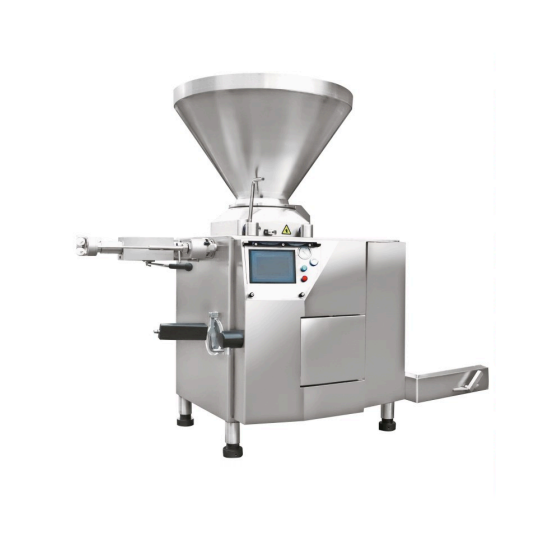
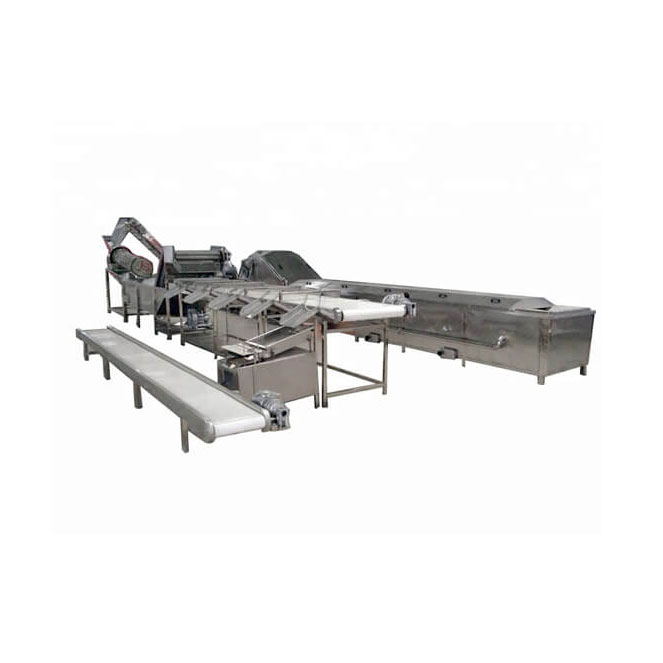
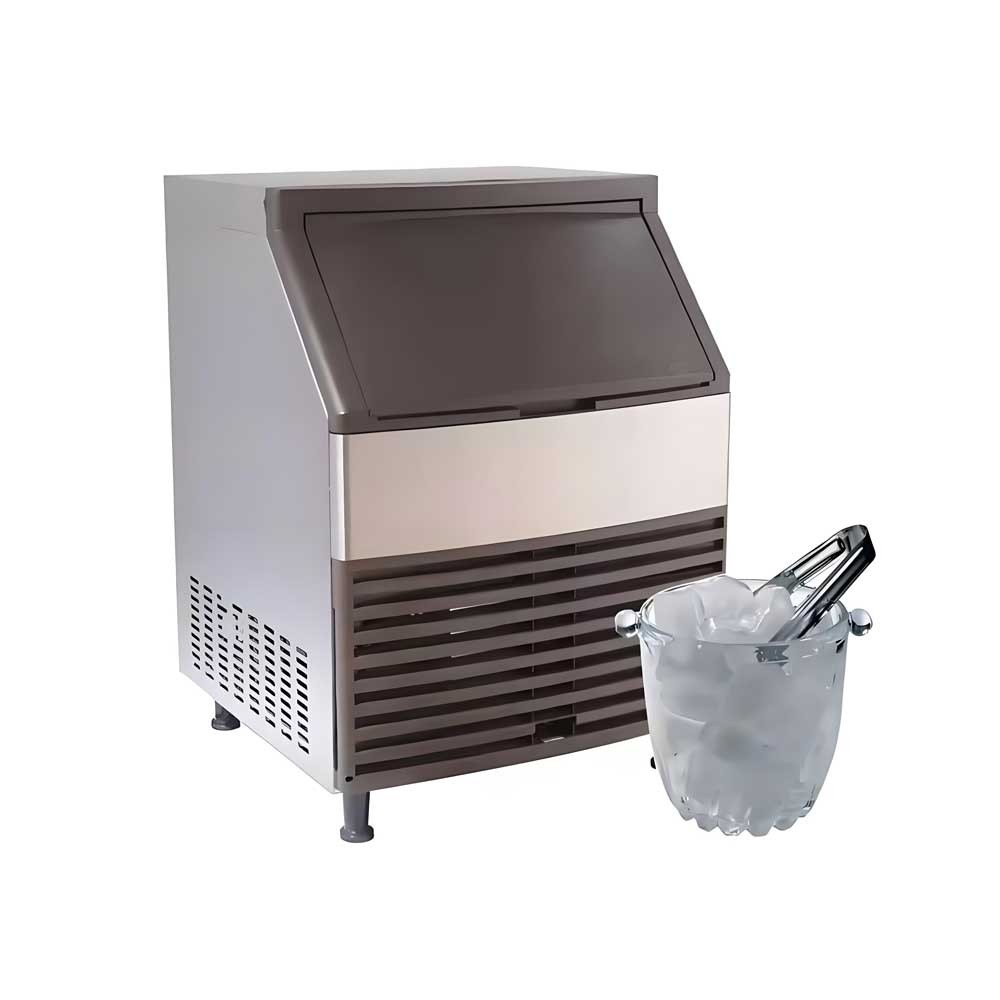
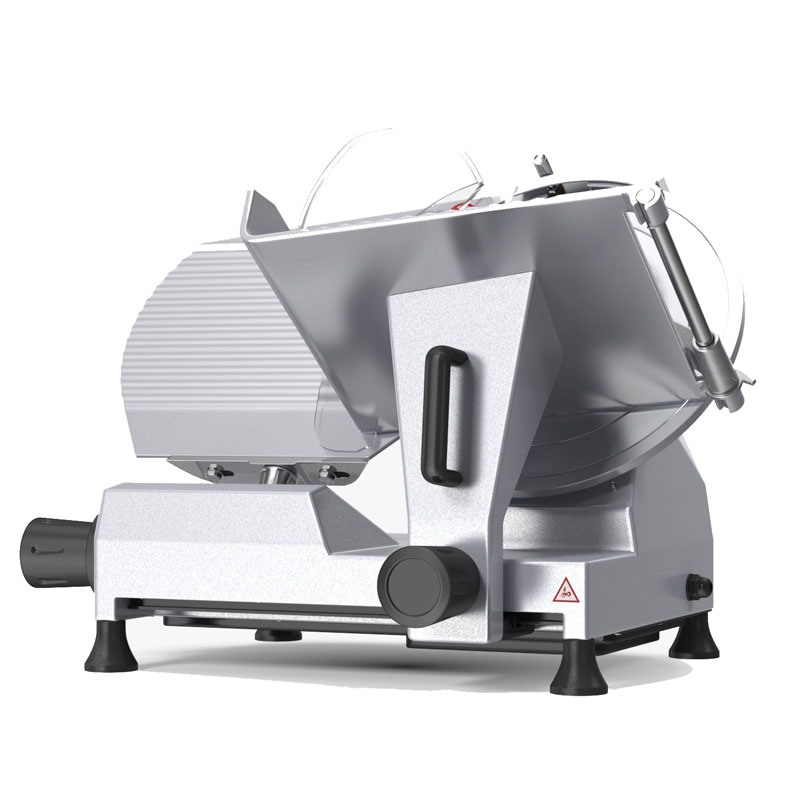 Heavy Duty Meat Slicer Machine
Heavy Duty Meat Slicer Machine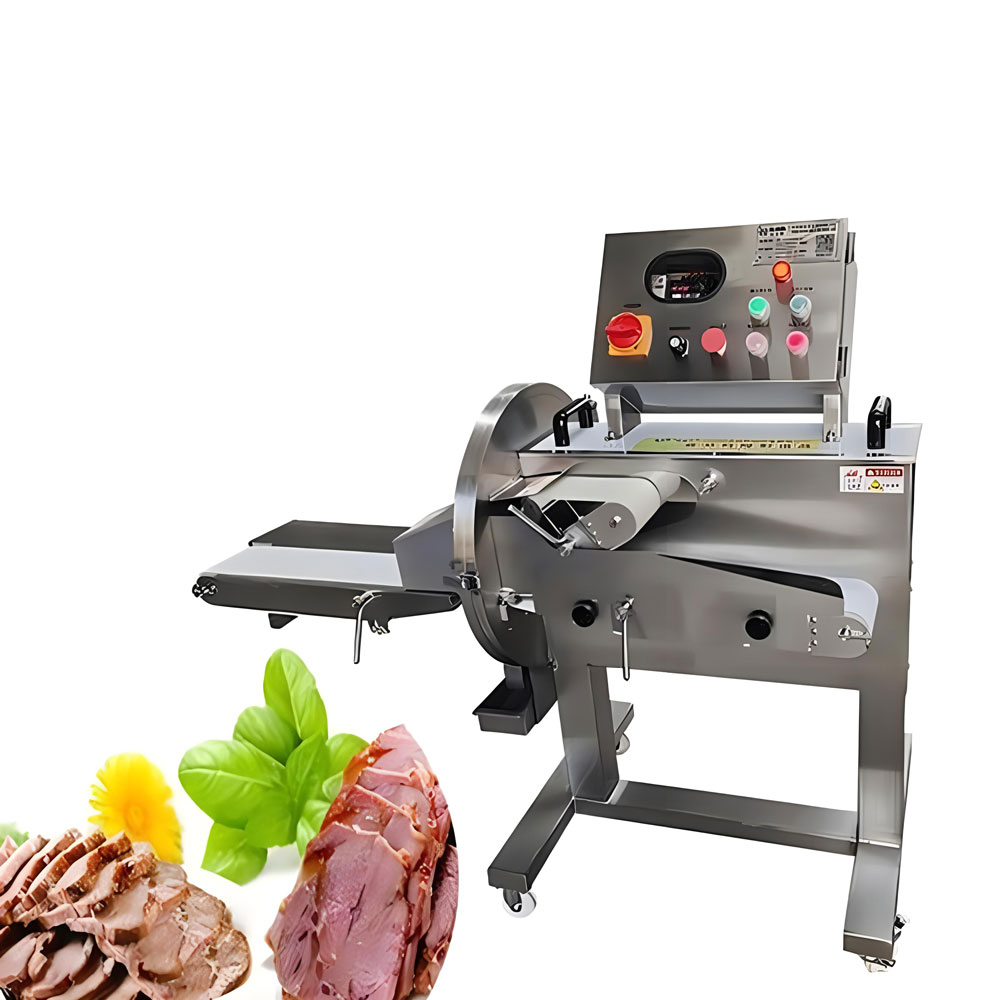 Electric Cooked Meat Slicer
Electric Cooked Meat Slicer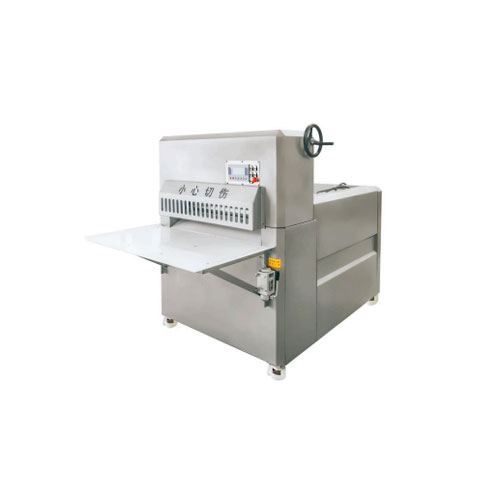 Frozen Meat Slicer
Frozen Meat Slicer
Ready to Get Started?